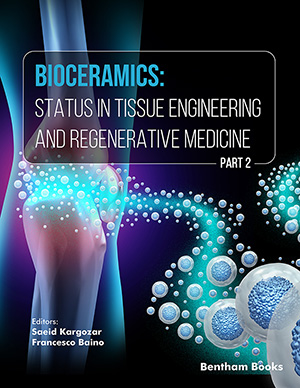Abstract
SHS investigation development is considered from the geographical and historical viewpoint. 3 stages are described. Within Stage 1 the work was carried out in the Department of the Institute of Chemical Physics in Chernogolovka where the scientific discovery had been made. At Stage 2 the interest to SHS arose in different cities and towns of the former USSR. Within Stage 3 SHS entered the international scene. Now SHS processes and products are being studied in more than 50 countries.
Abstract
Bioceramics form a versatile large family of biocompatible materials with diverse applications in the medical setting. These substances can be classified into distinct groups, including almost bio-inert ceramics (e.g., alumina), bioactive glasses and glass-ceramics, and moderately to quickly bioresorbable ceramics (e.g., hydroxyapatite and tricalcium phosphates, respectively). Bioceramics are conventionally used for healing hard tissue injuries due to their excellent properties, including mechanical performance. From a biological perspective, bioceramics exhibit outstanding features (e.g., inducing osteogenesis) in favor of bone reconstruction. Considering the central role of angiogenesis in tissue healing, different formulations of bioceramics have been demonstrated to have stimulatory effects on neovessel formation. Apart from physical properties (e.g., surface micron and nano topography), the chemical composition of bioceramics greatly affects their angiogenic capacity in vitro and in vivo. Several additional approaches are now well-established in order to increase the angiogenic activity of bioceramics, including adding pro-angiogenic dopants (e.g., copper and silicon) and loading pro-angiogenic bioactive molecules (e.g., vascular endothelial growth factor (VEGF)). In this sense, the degradation rate of bioceramics is a key property commonly mentioned to effectively promote angiogenesis. Cellular and molecular experiments have revealed the signaling pathways involved in angiogenesis which are activated by ionic dissolution products released from bioceramics. In this manner, this review highlights the new positive role that bioceramics can play in angiogenesis.
Keywords:
Angiogenesis, Bioactive glasses (BGs), Bioceramics, Calcium phosphates (CaPs), Calcium silicate bioceramics, Calcium sulphate bioceramics, Chorioallantoic membrane (CAM) assay, Endothelial cells (ECs), Hydroxyapatite (HAp), Ion release, In vitro, In vivo, Mesoporous bioactive glasses (MBGs), Neovascularization, Scaffold, Surface topography, Three-dimensional (3D) printing, Tissue engineering, Vascular endothelial growth factor (VEGF), Wound healing.
We recommend

Authors:Bentham Science Books






